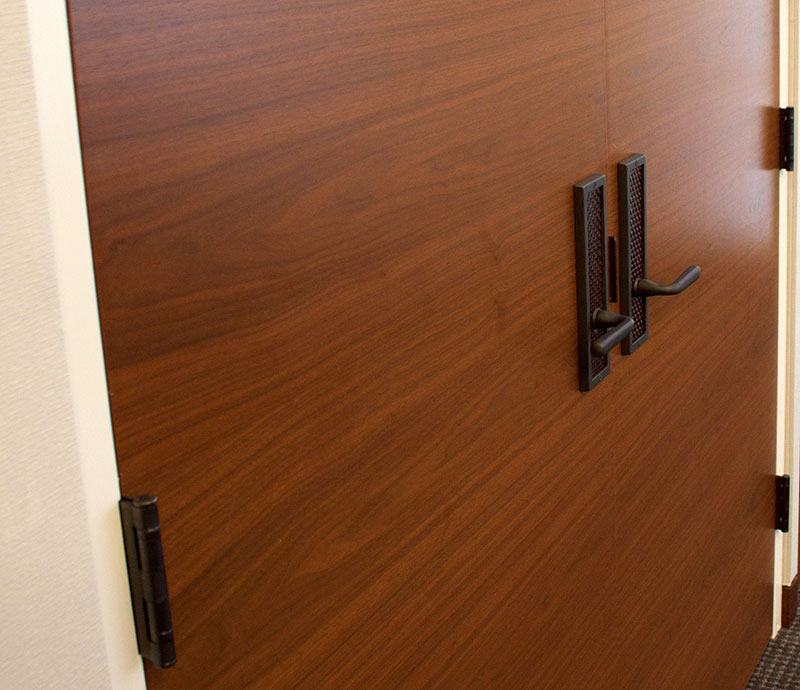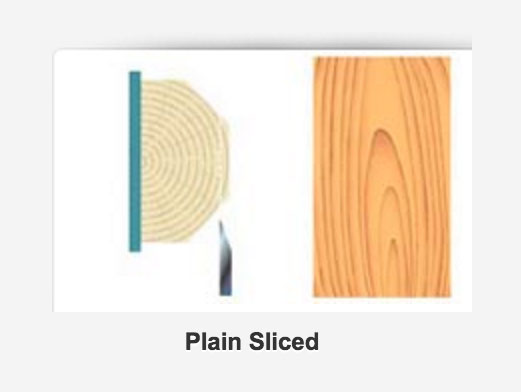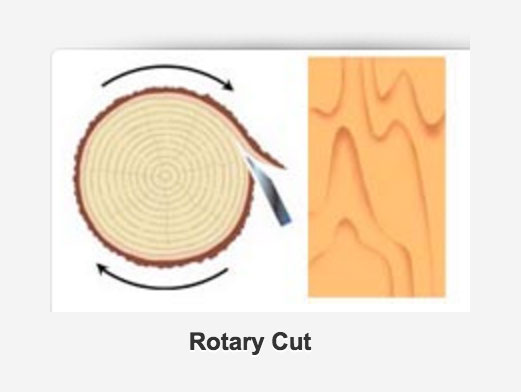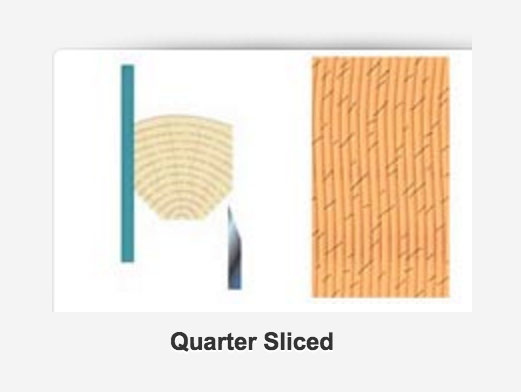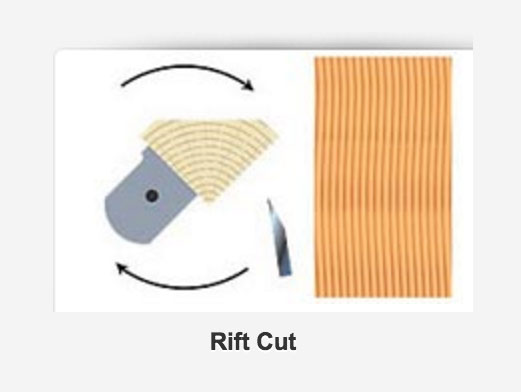After the face cut option is selected, the type of match at the joint is chosen. During fabrication of the veneer, how the individual cuts are laid next to each other changes the door’s appearance.
Book Match—The most commonly used match in the industry. Every other piece of veneer is turned over so adjacent pieces are opened like two adjacent pages in a book. The veneer joints match and create a mirrored image pattern at the joint line, yielding a maximum continuity of grain. Book matching is used with plain sliced and, less often, with other cuts of veneer.
Barber Pole Effect In Book Match—Because the “tight” and “loose” faces alternate in adjacent pieces of veneer, they may accept stain or reflect light differently, resulting in a noticeable color variation, often called “barber pole.” These variations are not considered a manufacturing defect.
Slip Match—The adjoining of veneer components in sequence without turning over every other piece. The grain figure repeats, but joints won’t show a mirrored effect. Slip matching is often used in quarter cut, rift cut, and comb grain veneers to minimize the barber pole effect.
Random Match—A random selection of veneer components from one or more logs, producing a “board-like” appearance.
End Match—Generally selected for doors with transoms, this match utilizes a single piece of veneer that runs from the bottom to the top of the door. At the transom, a mirror image is created by turning the veneer at the joint.
Continuous Match—When a single piece of veneer is utilized for both the face of the door and the transom.







